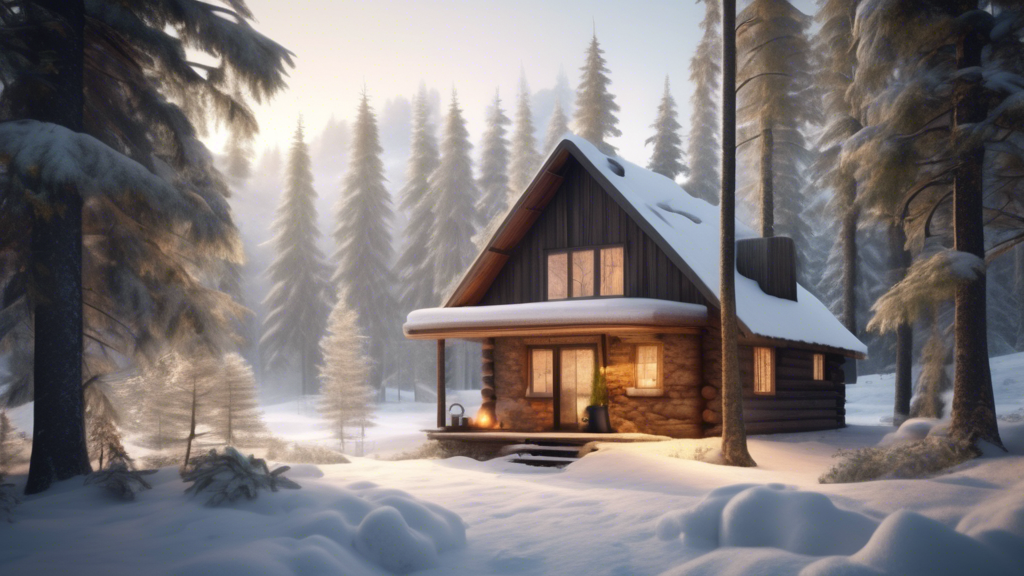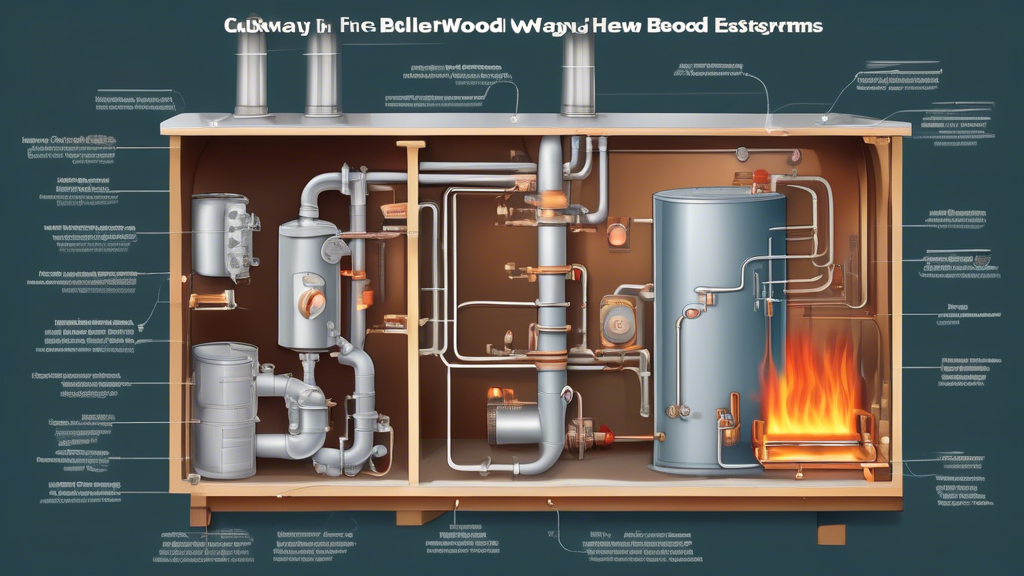Understanding How a Wood Boiler Works
If you’ve ever thrown a log on a fire and stared deep into the flickering flames, you’ve already felt the primal draw of wood as a heat source. Now, imagine channeling that warmth not just to cozy up in front of a crackling hearth, but to heat your entire home – that’s where the wonder of wood boilers comes in. So, how does a wood boiler work its magic, you ask? Let’s dive into these ingenious contraptions that have revolutionized home heating systems for those who dare to venture beyond conventional central heating setups.
Picture this: you’re loading logs into the belly of a beast (well, a metal one at least) that takes these natural gifts, burns them with unmatched fervor, and radiates warmth through your abode like a well-cooked pot roast spreading delicious aromas through the kitchen. The mechanism behind the wood boiler involves a fascinating journey from fuel loading and combustion, through a maze of heat exchange, to finally circulating that cozy warmth around your home.
But why bother with all this wood-fueled wizardry, when more traditional heating systems exist? The answer lies in the myriad benefits. Not only do wood boilers provide a cost-effective way to heat your home, they also get a thumbs-up in the sustainability department and can run surprisingly efficiently – like the overachieving cousin at family reunions. And we won’t leave you hanging without some handy tips for optimizing performance. From proper installation to regular maintenance, and picking the perfect logs as you would a fine cheese at a Farmer’s Market, we’ve got you covered.
Ready to dive into the logs and splinters of wood boiler construction? Stay tuned for a deeper look into how does a wood boiler work and how you can harness this toasty technology to banish the winter chill and maybe, just maybe, cut down on those heating bills. Whether you’re wielding the mightiest of chainsaws or simply turning a wrench, we promise you’ll soon appreciate these ornate ovens of outdoor origin.
Ah, wood boilers. The unsung heroes of home heating systems, where hygge coziness meets environmental might. If you’ve found yourself asking, How does a wood boiler work? you’ve come to the right place. Whether you’re a seasoned woodworking guru or just starting out, we’re exploring the basics of these cunning contraptions, so you can sound like an expert at your next backyard bonfire.
Introduction to Wood Boilers: Definition and Purpose in Home Heating Systems
A wood boiler isn’t just a furnace that eats logs for breakfast, lunch, and dinner. It’s a central heating system that uses wood—the ultimate renewable resource—to generate warmth for your home. Imagine a kettle of hot water slowly distributing its steamy goodness throughout your house, minus the British accents and tea bags. Essentially, a wood boiler harnesses the power of burning wood to heat water, which is then circulated through radiators or radiant floor systems to keep your home as toasty as a marshmallow roasting on a campfire.
Detailed Explanation of the Wood Boiler Mechanism
Now, let’s unravel the magic behind these devices, from fuel loading to heat circulation. Picture this: you’re performing a primitive ritual of the domestic kind, placing split wood logs into the boiler’s spacious firebox. Each log is like a little soldier, standing valiantly, waiting to fulfill its fiery destiny. Here’s the step-by-step magic that follows:
1. Fuel Loading
First, you load the fuel—logs, pellets, or chips—into the burn chamber. Consider it like feeding a pet dragon its favorite meal, except this dragon’s breath is what warms your home. If you’re lucky and have a new model, there’s usually an automated feed system, but if not, I suggest channeling your inner gym rat for the manual lifting.
2. Combustion Process
Next, we have the combustion process. The wood is ignited, either manually or with an electronic ignition system, and as it burns, gases and particles are released. It’s like the wood is venting its frustrations in a bout of fiery therapy, producing heat as a byproduct. Watch out for those flue gases though; they’re not meant to warm anything except the snazziest of chimney flues.
3. Heat Exchange
Enter the heat exchanger, the Robin to your boiler’s Batman. This component captures the heat produced by combustion and transfers it to the water in the system. Imagine a dance between fire and water, twirling together like they’re contestants in ‘Dancing With the Elements’. The heat exchanger ensures that only the steamiest moves make it to your heating system.
4. Circulation in Home Heating
Once that water is heated to the perfect temperature—just enough bubble to let you know it means business but not enough for an impromptu noodle cook-off—it begins its work. Through a network of pipes, hot water circulates to radiators or radiant floor systems, spreading warmth throughout your abode. Think of it like a cozy blanket wrapping around each room, ensuring no corner feels left out in the cold.
And there you have it, the wood boiler process boiled down (pun entirely intended). Remember, every piece is crucial to the puzzle, no matter how small. If a mistake occurs, don’t stress too much—trust me, I once mixed up the air vents and ended up with more smoke in my workshop than a magician’s grand finale. A lesson learned with a side of burnt eyebrows!
Remember, wood boilers come in various designs and complexities. For those of you looking to delve deeper into the advanced world of automated controls and oxygen regulation systems, embrace the learning curve. But for those just starting or with simpler setups, know that you too, are heating heroes.
So, whenever your wood boiler hums to life, know the complex dance that’s keeping you warm. You’re part of a community of woodworkers who understand that sometimes, a little (or a lot) of sawdust is worth the comfort of a well-heated home. Whether you’re felling trees or simply lugging logs, you’re contributing to a centuries-old tradition of warmth, and it’s pretty darn cool—no pun intended!
Click Here For The World’s Largest Collection of 16,000 Woodworking Plans

Advantages and Efficient Usage Strategies of Wood Boilers
If you’re wondering how does a wood boiler work in terms of making life easier, warmer, and a bit greener for your home, you’ve come to the right place. Let’s dive into some of the warm and cozy benefits of these mighty machines.
Benefits of Using Wood Boilers
First on the list is cost-effectiveness. Imagine this: You’re lounging in your living room, a smile spreading across your face as your heating bill shrinks before your very eyes. That’s the magic of a wood boiler. Since it runs on wood—a renewable resource that’s often cheaper than fossil fuels—you can keep your home toasty without burning a hole in your wallet. Plus, if you have access to your own firewood, you’re practically bathing in free heat!
Next up, we’ve got sustainability. In today’s world, who doesn’t want to do their part in saving the planet? Wood boilers make this easier than you think. By using wood as a fuel source, you’re contributing to a reduction in reliance on fossil fuels and promoting sustainable forest management. Think of a wood boiler as your silent partner in eco-friendliness.
Last but not least: energy efficiency. These boilers turn wood into warmth with remarkable efficiency. Unlike your Uncle Bob’s BBQ skills, which are a little hit-or-miss, wood boilers are designed to maximize heat output from every log. With a well-installed and maintained wood boiler, you can potentially extract more heat energy than other common heating systems, ensuring you get the most bang for your (timber) buck.
Tips for Optimizing Wood Boiler Performance
Alright, so you’ve got your wood boiler and you’re ready to start feeling like a heat wizard. But before you start wand-waving, let’s talk strategy.
Proper Installation
Step one: Installation. Think of this as the foundation of your comfort palace. For the tech-advanced folks, yes, you can do this yourself if you have the experience. But if your prior installation work includes the lopsided shelf in your kitchen that might drop your cereal boxes on a whim, you might want to call a professional.
A good installation is to a wood boiler what a solid pair of boots is to a hiker—essential and supportive. Make sure your boiler is placed in a location that allows for proper ventilation and accessible maintenance. That means not shoving it in your garage’s dark corner where even spiders fear to tread.
Regular Maintenance
Next up is maintenance, which you’ll need to perform regularly. Think of this as sending your wood boiler to the spa. Clean out ash and inspect for any damage or wear—twice as often if you’re the type who says, “maintenance schmmaintenance.” Keeping these check-ups regular ensures your boiler doesn’t start underperforming when the cold sets in, leaving you colder than a snowman’s heart.
Choosing the Right Wood
Finally, let’s discuss the importance of picking the right wood. This isn’t Goldilocks and the Three Bears, but finding wood that is just right is critical. Here’s a quick primer: seasoned hardwood is your best friend. Not too green and not too soft, it burns longer and hotter, providing consistent heat output.
Avoid wood that’s too wet or newly chopped—such logs can dampen your boiler’s spirit faster than a sudden downpour on a camping trip. Use a moisture meter if you’re unsure; it’s a small investment that ensures your wood is on point. Think of yourself as the sommelier of wood! You’re pairing your boiler with the wood that brings out the best flavors (heat).
And there you have it, friends! Remember, navigating the world of wood boilers is a bit like learning to drive. At first, you can’t tell the brake from the accelerator, but with a bit of practice and patience, you’ll soon be cruising comfortably down the highway of warmth and efficiency. Welcome to the quieter, warmer haven of the wood boiler club!
In wrapping up our journey into the world of wood boilers, we hope you’ve gained a clear picture of how these marvelous machines work their magic to keep your home cozy. From loading up fuel to mastering the art of combustion, heat exchange, and circular heating, wood boilers offer a down-to-earth and efficient way to heat your space.
Embracing a wood boiler means more than just keeping warm—it’s an invitation to join a league of eco-friendly, cost-savvy homeowners. By choosing this method, you’re not only making a choice that supports sustainable energy use but also giving a nod to the age-old wisdom of using what nature so generously provides.
Of course, like any good relationship, getting the most out of your wood boiler takes a bit of effort. Optimizing performance isn’t just about having the finest equipment; it’s about regular maintenance akin to keeping your car in top gear and selecting the right wood as if you’re choosing the best kindling for a campfire. A little care goes a long way in ensuring your system runs smoothly and effectively.
And let’s not forget, as with any craft, sometimes things might not go as planned. Perhaps you’ll find yourself wondering how a bonfire started in your boiler or why it suddenly developed a mind of its own. When those hiccups happen, remember, you’re not alone. Even seasoned boiler buffs have had a story or two about their misadventures. The key is to learn, laugh, and maybe shed a splinter along the way!
For those diving into the depths of advanced tools or sticking with the trusty basics, know that your efforts in mastering the question how does a wood boiler work bring you a step closer to being a high-efficiency heating hero. Happy wood burning, and may your home always be warm and your spending cool!
Click Here For The World’s Largest Collection of 16,000 Woodworking Plans

